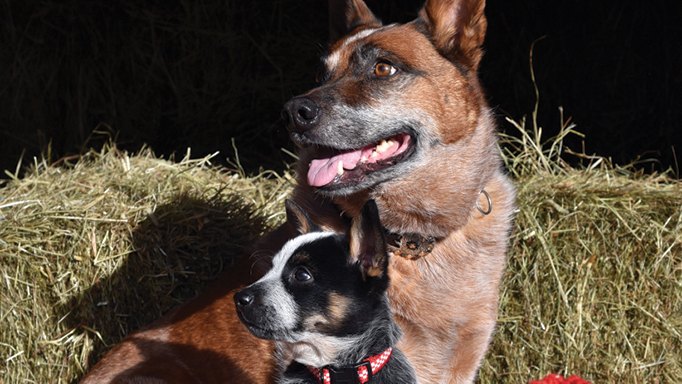Veterinarian Ali Miletic warns horse owners to use caution when deworming horses because certain products can be poisonous to pets.
As the weather warms up and spring turns into summer, horse owners start to plan the yearly vet visit to administer vaccines and dewormers. And where there are horses, there are often curious dogs and cats that may want to investigate the yummy-smelling and deliciously-flavoured deworming products meant for your equine companions.
Dewormers, or anthelmintics, target many different types of parasites that can infest horses. There are four main families of anthelmintics used in horses; benzimidazoles, tetrohydropyrimidines, isoquinolone-pyrozines, and macrocyclic lactones.
Benzimidazoles work by interfering with the worm’s energy at the cellular level, preventing growth of the worm.
Tetrohydropyrimidines (pyrantel) act at the neuromuscular junction, causing rigid paralysis of adult worms that live in your horse’s intestines.
Isoquinolone-pyrozines (praziquantel) are effective only on tapeworms and are only marketed as a combination product with macrocyclic lactones.
Macrocyclic lactones (ivermectin and moxidectin) act on ion channels in nerve and muscle cells, resulting in flaccid paralysis of the worm. These are the most common and potent anthelmintics on the market and actually only require 1/10th of the dose of other deworming products. Unfortunately, they also have the highest resistance rate.
The anthelmintics described above are also used in dogs and cats to treat similar burdens of worms; however, they are administered in considerably smaller doses than you would give your horse. Dogs and cats can easily overdose from ingesting a glob of wormer that your horse may have spit out during the deworming process.
Signs of anthelmintic toxicity can range from vomiting to difficulty breathing, seizures, and even death.
There are certain breeds such as Collies, Australian Shepherds, and other herding breeds (see chart) that are very sensitive to macrocyclic lactone toxicity because they lack a certain glycoprotein in the blood-brain barrier that is responsible for pumping this family of anthelmintics out of the central nervous system. The animal is therefore less able to redistribute and clear the deworming molecules from the body. Even dogs that are not one of the above-mentioned breeds can be affected. Clinical signs to watch out for indicating macrocyclic lactone toxicity include muscle weakness, depression, blindness, coma, and in some cases, death.
If you notice any unusual behaviour from your dog or cat after a day of deworming at the barn, it is essential that you bring him or her to your vet as soon as possible. In order to get the best treatment for your animal, knowing what product was used to deworm the horses is important so that the vet can tailor the treatment of your pet to ensure the best outcome.
Deworming horses is an essential part of keeping them healthy. Protecting your dog or cat from dewormer exposure is simple: close stall doors after your vet administers the medication until stalls can be mucked out; pick up and dispose of any used product or syringes in a bin with a secure lid, and lock away unused tubes in a safe place … or simply do not allow dogs or cats in the barn on deworming day!

